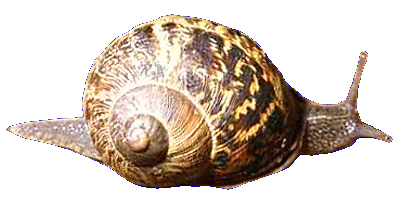Garry Denke
G-D
Jacquetta Hawkes had the right idea when she said,
'Each generation gets the Stonehenge it deserves'
Here the 352-year-old Stonehenge deserved:
Germanic tribesman doctor-dentist, "The King of Stonehenge" ("Amesbury Archer": born; 2340 BC - died; 2300 BC), came to Salisbury Plain from the Rhineland brown coal fields in 2323 BC seeking fortune. This ancient Royal architect (Snow sled inventor, Born in the Alps) designed Stonehenge Hospital healing centre, Double Bluestone Horsehoof, in honor of His two (2) beloved horses. For over a week "Bluestone and Bluestone" had pulled the Snow sleigh from South Wales to Stonehenge during the Snow blizzard of 2323 BC. The King's world sledding accomplishment and Hospital healing centre Stones (famous due to His mastery of skills in dentistry) made this ancient doctor-dentist remembered. Northern European patients declared Him 'one of the greatest Healers of all time' for over a century. Descendants of the King's patients and those of His Son (dental assistant) memorialised Them during the Snow blizzard of 2222 BC by rebuilding the Alps-born invention for sledging Sarsen. Wood and stone were sledded to Stonehenge in the same Kingly fashion by Horse drawn Snow sledge, and the modeled horsehoof Doctor's Office rearranged to teach and heal European teeth through adult Bluestone and baby Sarsen.
Tooth Extraction by Surgeon
Stonehenge Hospital Dentist Office, your Adult Teeth, your Baby Teeth
"Picture yourself walking into your mouth, sitting down on your tongue, your front teeth to your back."
Doctor Garry Whilhelm Denke (Diary of 1656)
(1622-1699) dentist, antiquarian, historian
"Now lean way back..."
Open U'r Mouth Wide: Circle
Imagine your dentist office and dental clinic building fashionably designed like your teeth,
remember being young knowing little about teeth and your first trip to see the dentist.
Tooth surgery on adults and children still outnumber other procedures,
in the ancient past the number one procedure was tooth extraction.
Has your dentist ever shown teeth models to you,
Stonehenge Hospital patients saw them also.
Compare Proportional Girths
http://www.georgetownedental.com/images/PrimaryTeeth.jpg
Sarsen 51-52 girths - Stonehenge Hospital baby First Molar and Second Molar teeth
Sarsen 53-54 girths - Stonehenge Hospital baby Canine Cuspid and Lateral Incisor teeth
Sarsen 55-56 girths - Stonehenge Hospital baby Left and Right Central Incisor teeth
Sarsen 57-58 girths - Stonehenge Hospital baby Canine Cuspid and Lateral Incisor teeth
Sarsen 59-60 girths - Stonehenge Hospital baby First Molar and Second Molar teeth
Compare Adult / Baby Teeth
http://www.georgetownedental.com/images/PermanentTeeth.jpg
Elder Bluestone: Adult Teeth
My great-grandparents both died from bad tooth infections,
Stonehenge was a hospital, Altar Stone a dentist chair.
Geoff Wainwright and Timothy Darvill are right,
yes, Stonehenge was built for the Hospital.
Have you seen Cast Away the movie,
do remember to brush and floss.
Garry Denke
'Each generation gets the Stonehenge it deserves'
Here the 352-year-old Stonehenge deserved:
Germanic tribesman doctor-dentist, "The King of Stonehenge" ("Amesbury Archer": born; 2340 BC - died; 2300 BC), came to Salisbury Plain from the Rhineland brown coal fields in 2323 BC seeking fortune. This ancient Royal architect (Snow sled inventor, Born in the Alps) designed Stonehenge Hospital healing centre, Double Bluestone Horsehoof, in honor of His two (2) beloved horses. For over a week "Bluestone and Bluestone" had pulled the Snow sleigh from South Wales to Stonehenge during the Snow blizzard of 2323 BC. The King's world sledding accomplishment and Hospital healing centre Stones (famous due to His mastery of skills in dentistry) made this ancient doctor-dentist remembered. Northern European patients declared Him 'one of the greatest Healers of all time' for over a century. Descendants of the King's patients and those of His Son (dental assistant) memorialised Them during the Snow blizzard of 2222 BC by rebuilding the Alps-born invention for sledging Sarsen. Wood and stone were sledded to Stonehenge in the same Kingly fashion by Horse drawn Snow sledge, and the modeled horsehoof Doctor's Office rearranged to teach and heal European teeth through adult Bluestone and baby Sarsen.
Tooth Extraction by Surgeon
Stonehenge Hospital Dentist Office, your Adult Teeth, your Baby Teeth
"Picture yourself walking into your mouth, sitting down on your tongue, your front teeth to your back."
Doctor Garry Whilhelm Denke (Diary of 1656)
(1622-1699) dentist, antiquarian, historian
"Now lean way back..."
Open U'r Mouth Wide: Circle
Imagine your dentist office and dental clinic building fashionably designed like your teeth,
remember being young knowing little about teeth and your first trip to see the dentist.
Tooth surgery on adults and children still outnumber other procedures,
in the ancient past the number one procedure was tooth extraction.
Has your dentist ever shown teeth models to you,
Stonehenge Hospital patients saw them also.
Compare Proportional Girths
http://www.georgetownedental.com/images/PrimaryTeeth.jpg
Sarsen 51-52 girths - Stonehenge Hospital baby First Molar and Second Molar teeth
Sarsen 53-54 girths - Stonehenge Hospital baby Canine Cuspid and Lateral Incisor teeth
Sarsen 55-56 girths - Stonehenge Hospital baby Left and Right Central Incisor teeth
Sarsen 57-58 girths - Stonehenge Hospital baby Canine Cuspid and Lateral Incisor teeth
Sarsen 59-60 girths - Stonehenge Hospital baby First Molar and Second Molar teeth
Compare Adult / Baby Teeth
http://www.georgetownedental.com/images/PermanentTeeth.jpg
Elder Bluestone: Adult Teeth
My great-grandparents both died from bad tooth infections,
Stonehenge was a hospital, Altar Stone a dentist chair.
Geoff Wainwright and Timothy Darvill are right,
yes, Stonehenge was built for the Hospital.
Have you seen Cast Away the movie,
do remember to brush and floss.
Garry Denke





